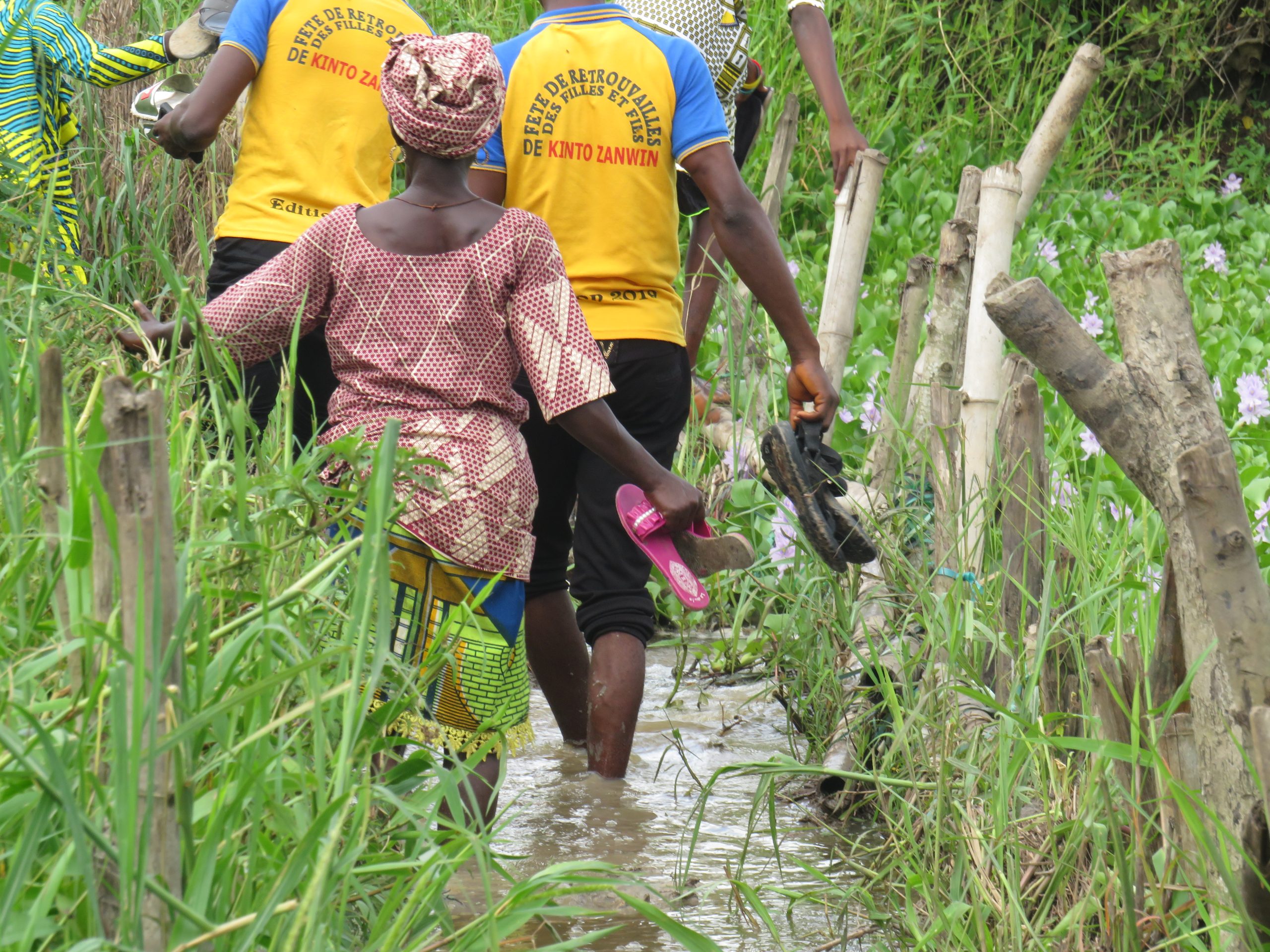Benin, Projet d’appui à la Synergie Locale pour l’Eau

General Objective:
The wider objective of the project was to facilitate the operationalization of the Integrated Water Management through the development of synergies between non-state actors in all their diversity (incl. local communities) whilst implementing concrete actions concerning inclusive floods management and in turn, climate change and climate resilience.
Specific Objective:
The specific objective was to mobilize the population of the region around their economic, social, cultural and environmental interests, in order to participate actively in actions of inclusive floods management so as to impact them positively. As such, the project aimed to develop synergies in the related actions amongst non-state actors and between non-state actors and state actors (incl. the Water General Directorate ; decentralized government services such as the Departmental Directorate of Energy, Water and Mines, the Territorial Agricultural Development Agency ; municipalities, village/district/neighborhood chiefs) to lead to effective and sustainable results in an optimized, efficient and green manner.
Results:
The results of the project are:
1) Sensitization and dialogue at the local level: favorable conditions are created and synergy in actions are set in place for the management of floods on the local level.
For the first time in the Benin context, integrated water management at the community level was put into practice. One of the success factors was the effective and inclusive community-based approach developed by VNG International. The project took as its starting point the existing measures of citizens against the negative consequences of floods, and helped the citizens to make them more effective. The process of accompanying people at the grassroots level to organize themselves around their economic, social and cultural interests as boatmen/women, market vendors, residents, municipality representatives or other stakeholders to actively participate in the effective management of floods has had a positive effect on reducing the damage for everyone. In the process, citizens were also supported to join together in a sustainable way to be a full discussion partner of local authorities and municipal actors in the field of water.
2) Pilot actions Integrated Water Management: management of floods and economical valorization of water resources
Where the project has been particularly innovative is in the way it has built the capacities and engaged local people in its implementation. At the heart of the PSL Eau was the development, financing and implementation of 10 pilot actions in close collaboration with communities. These pilots were set up in a way that intensively made use of local manpower from the local communities, also for sustainability and upkeep purposes. That high intensity labor-based approach has enabled 375 people, including 330 young people and 45 women, to benefit from paid employment. The 10 pilot actions consisted of:
- The construction of a 56-meter concrete dyke to preserve a market from flood risks.
- The extension of drainage channels (in 2 areas).
- The construction of concrete footbridges to favor social and economic accessibility during the floods, or access ramps to existing footbridges (in 3 areas).
- The de-clogging of canals (of water hyacinths and solid waste) to facilitate economic activities, increase agricultural production by unflooding arable lands (in 7 areas).
- The greening of riversides as anti-erosion method (in 2 areas).
- Awareness raising on proper waste disposal (in 2 areas).
Among other things, through the establishment of multi-stakeholder consultation frameworks (CC-GIRE), communities have created local IWRM institutions to drive and influence IWRM actions and their sustainability. The project has also implemented a Community Flood Early Warning System (C-EWS), consisting of the installation of 25 early warning beacons coupled with a mobile application. The C-EWS is one of the flagship pilot actions of the project, which has enabled local communities to experience less damage and take preventive measures, by putting them in the driver’s seat of early warning alert’s emission.
3) Capitalization and sharing of experiences and knowledge
Services delivered
Strengthening of framework conditions:
- Information, communication and sensitization to communities and local state representatives.
- Creation and animation of the consultation framework (i.e. cadres de concertation) for non-state actors.
- Support to the formalization of consultation frameworks into prefiguration structures of Local Water Committees (i.e. Comitãs Locaux de l’Eau, CLE) through the formalization and capitalization of good practices.
- Capacity building of consultation frameworks members on good institution governance (incl. transparent financial management and conflict resolution).
- Representation and participations of non-state actors in Local Water Committees.
- Support to the contribution of non-state actors/local communities to local economic development strategies.
Pilot actions of Integrated Water Management:
- Mapping of local Integrated Water Management initiatives.
- Elaboration and implementation of pilot actions for the inclusive management of floods and economic valorization of water resources (including capacity building and coaching).
- Conception of (green) flood resilient infrastructure, based on endogenous practices.
- Economic valorization of water resources benefiting women and young people.
Early Warning System (EWS):
- Installation of water level markers (i.e. balises) and outreach and communication about appropriate behavior at different water levels;
- Creation of a mobile app targeting the population, development of a data collection and management system from communities to feed the EWS.
- Capacity building of the ANPC (National Civil Protection Agency) for the management of the mobile app.
Capitalization on the local level:
- Benchmarking, horizontal learning and sharing of experiences for scale-up.
- Elaboration and broadcast of capitalization and communication products (e.g. creation of a WebTV, WhatsApp groups for the exchange of community members on water resources, production of a documentary film, thematic factsheets on EWS and IWRM consultation frameworks for the general public and technical and financial partners)
- Evaluation study of the pilot actions.
- Action plan for the scaling up of good practices.
- Conduct of overall monitoring and evaluation.